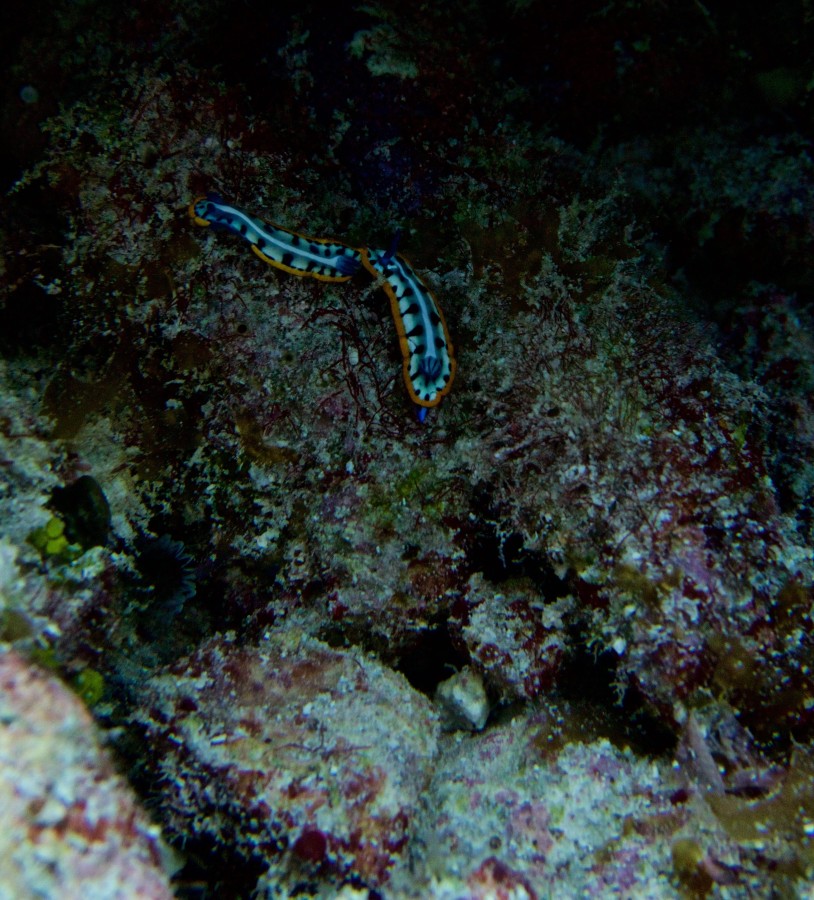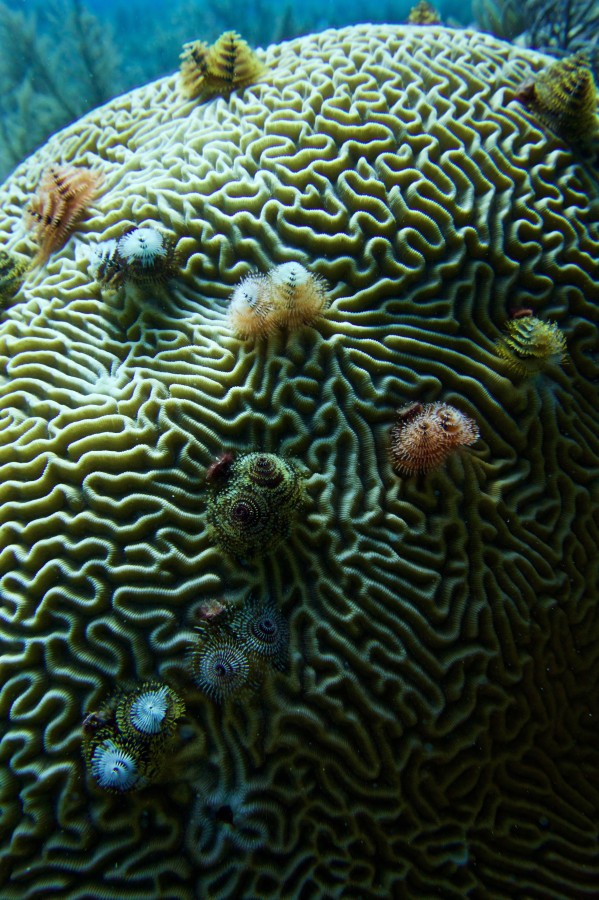My last Sunday morning with the Bimini Shark Lab was packed with activities up until we left that afternoon. We started the morning by finally doing the shark handling course with Anthony. Over the past few days, several juvenile lemon sharks and nurse sharks had been captured and placed into the pens, so we had real live sharks to work with. Anthony explained some unique biology of each of the sharks and then we were allowed the chance to hold each of the sharks ourselves! It was amazing to get such hands-on experiences (literally!)
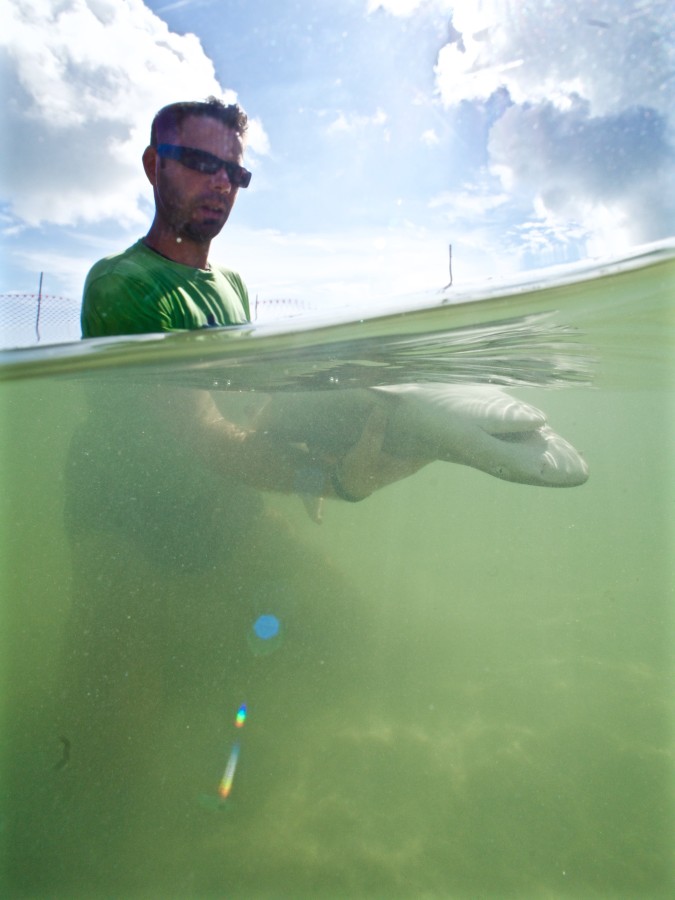
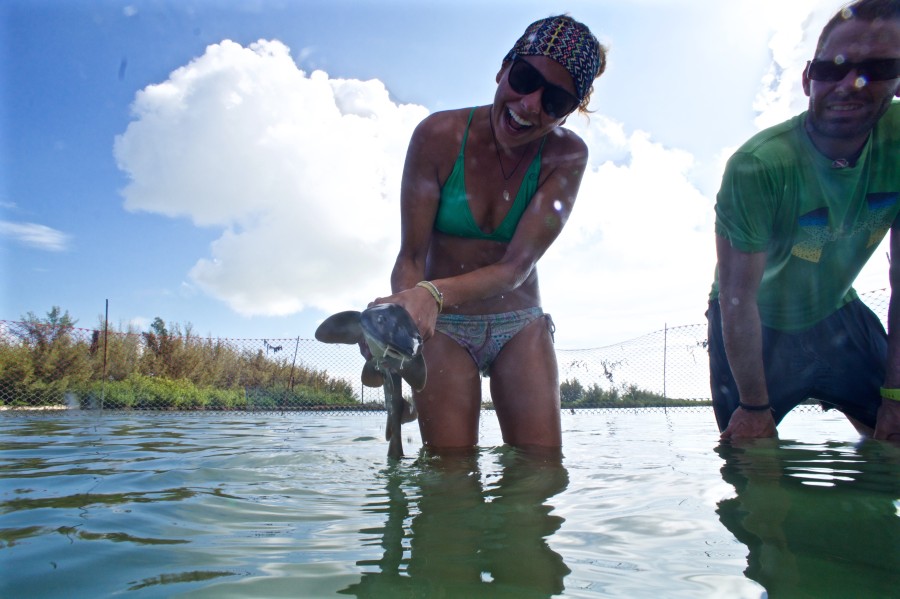
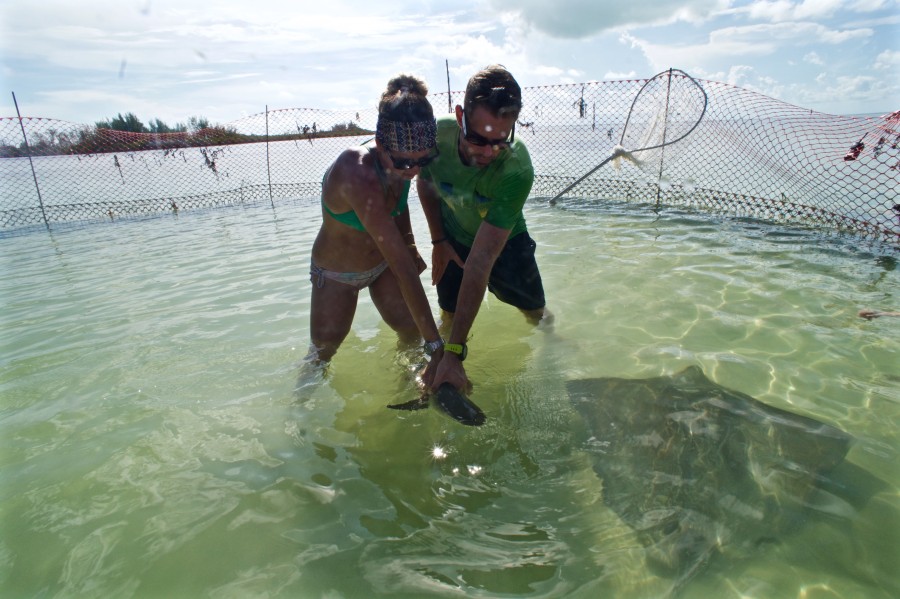
Afterwards, we headed out to snorkel the Sapona, an old concrete vessel that was grounded on a shallow reef, used as target practice by the Americans during WWII, and is now a popular snorkeling destination for tourists in Bimini. We spent a solid 45 minutes swimming around the hollowed out structure that once was a functioning ship, seeing a good amount of marine life living amongst the degrading concrete.
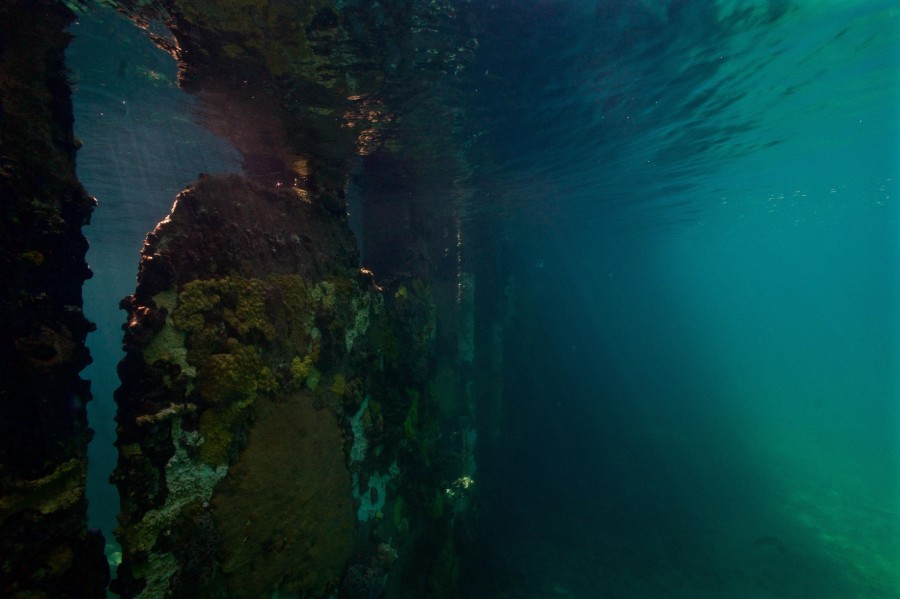
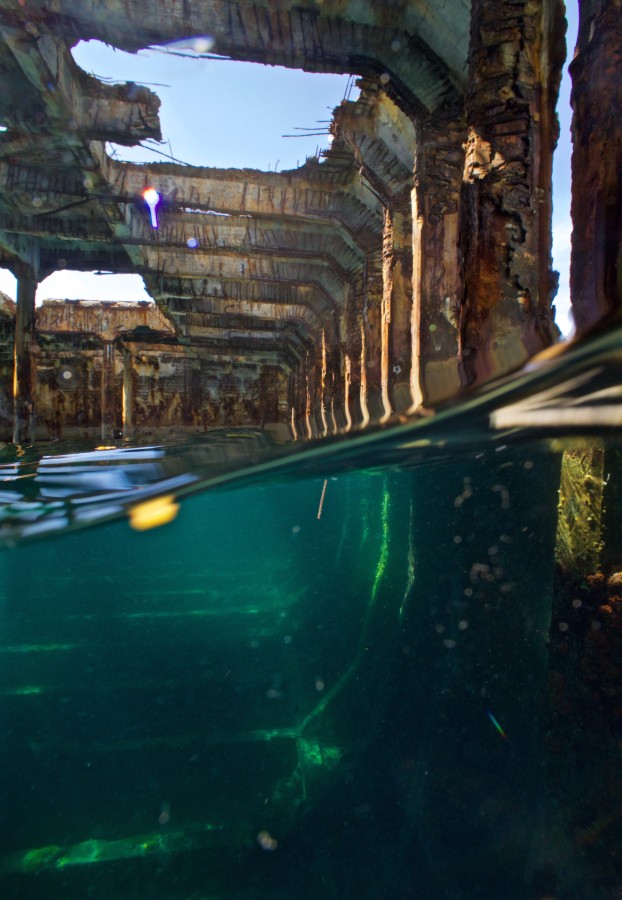
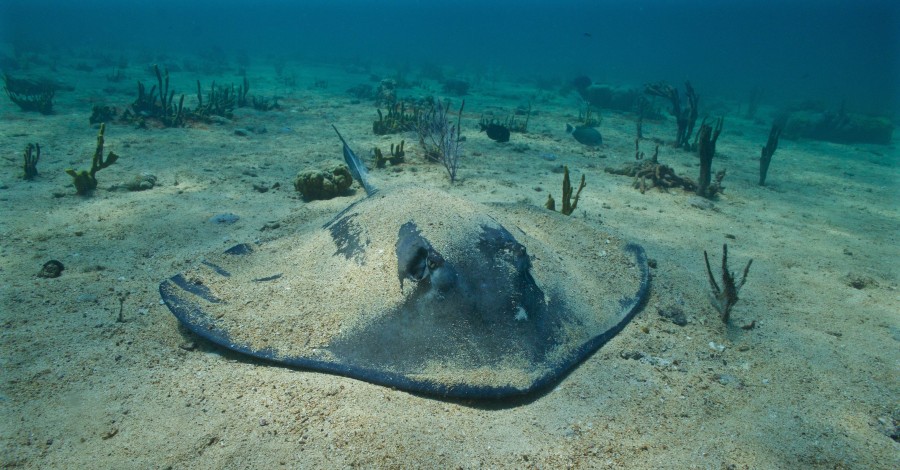
After that snorkel we cruised back to the Triangle where we would do one last shark feed to cap off our 5 day trip. Once the staff had put all the lines in place and securely anchored the boat, we donned our mask, fins, and snorkels, and hopped in the water. It was once again an exhilarating experience to be so close to these gorgeous animals.

After going through a bucket of fish parts, we packed back on the boat and zipped back to the lab, where we chowed down on lunch. After a quick packing, we were picked up by the lab’s van and shuttled to the tiny airport on South Bimini. Before we knew it, we were flying over the Atlantic Ocean back towards Miami. The research experience had flown by – our days were so full of activities and learning it had barely seemed that a day had passed before the entire experience was over! But I was so grateful to Jeff Trotta and the incredible Shark Lab crew for hosting me, as it was the experience of a lifetime and I learned so many interesting things about marine biology and conservation.
My next three days were spent crashing at Captain Slate’s house in Key Largo. I used this time to rest and recuperate as well as attempt to catch up on emails and logs. It was a much needed hiatus from the hectic life as a scholar and I took advantage of those few days of peace and quiet before I was to head over to work with the folks at Reef Environmental Education Foundation, also known as REEF.
Friday was my first day with the REEF crew and Ellie, the education and outreach coordinator, picked me up early in the morning from the nice little studio apartment I was renting for two weeks at a local dive shop, Quiescence. We were the first ones at the office and she gave me a quick tour around the building, introducing me to everyone as they trickled in for the morning. I would be spending the next two weeks as an unofficial intern, helping out with tasks around the office as well as the planning and execution of a lionfish derby and part of REEF Fest. I had arrived the day before the Key Largo Lionfish Derby so most of my day was spent helping the interns prepare for the captain’s meeting that evening and the derby the next day. Around 3 in the afternoon we loaded the supplies into vehicles and headed to the John Pennecamp state park, where the derby was to be held. We spent the rest of the afternoon setting up for the captain’s meeting, where team captains would verify registration and sit through a presentation given by Lad Akins, the Director of Special Projects, about the lionfish invasion in south Florida as well as how the next day would go. Around 5:00 or so, captains started arriving at the visitor’s center to be checked in and to receive their info packets. Once all the teams had arrived, we went through the presentation, answered any questions, and had a small raffle of items provided by REEF. Once everyone had left, we took down all the tables and items we had set up, storing them away until tomorrow.
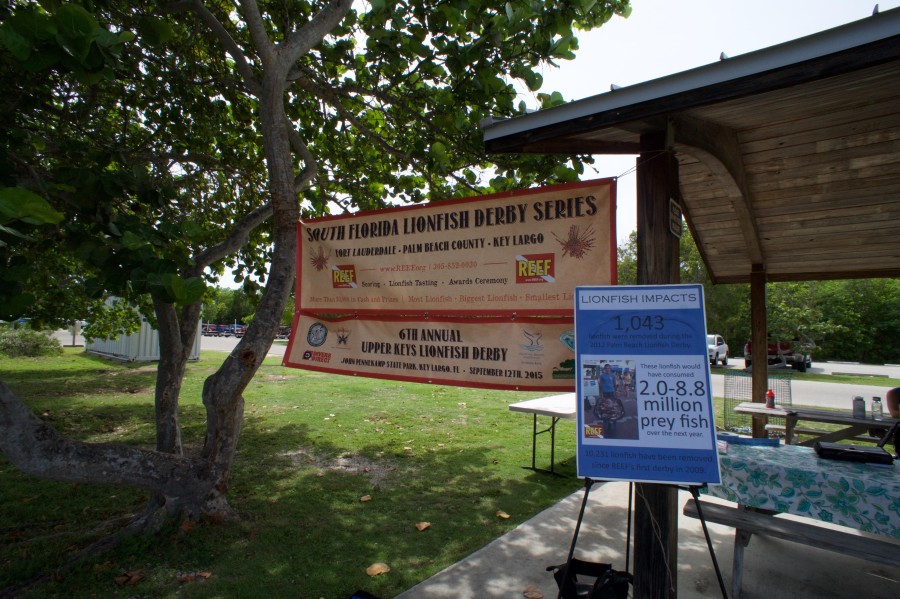
Saturday was the big day for the derby, but luckily we weren’t needed at the park until noon, so I had the morning to go for a run, do some grocery shopping, and settle a bit more into my apartment. When noon came, Ellie picked me up to head over to the state park. We immediately began setting up for the day, hanging banners, laying out merchandise and raffle items, and putting together the lionfish counting/measuring stations. We also chopped a whole lot of tomatoes, peppers, and onions for lionfish ceviche for all the participants to enjoy upon returning with their catch. We spent several hours working to set up and by around 4, the boats had started to come in with their coolers of lionfish. By 5 PM, all the boats needed to be back and as the last boats came in, there were several hundred lionfish to measure and record. All in all, 488 lionfish were killed that day by 16 teams, which was a great result! There were awards for biggest, smallest, and most lionfish killed and after the awards ceremony, lionfish were filleted and handed out to anyone who wanted some. To end the day, we all headed to a local bar, Sharkey’s, for drinks and fried lionfish. It was a busy day full of hard work, but it was great to see the community come together and participate in the derby. It was a great way to see how successful REEF has been in getting locals involved and engaged in marine conservation.
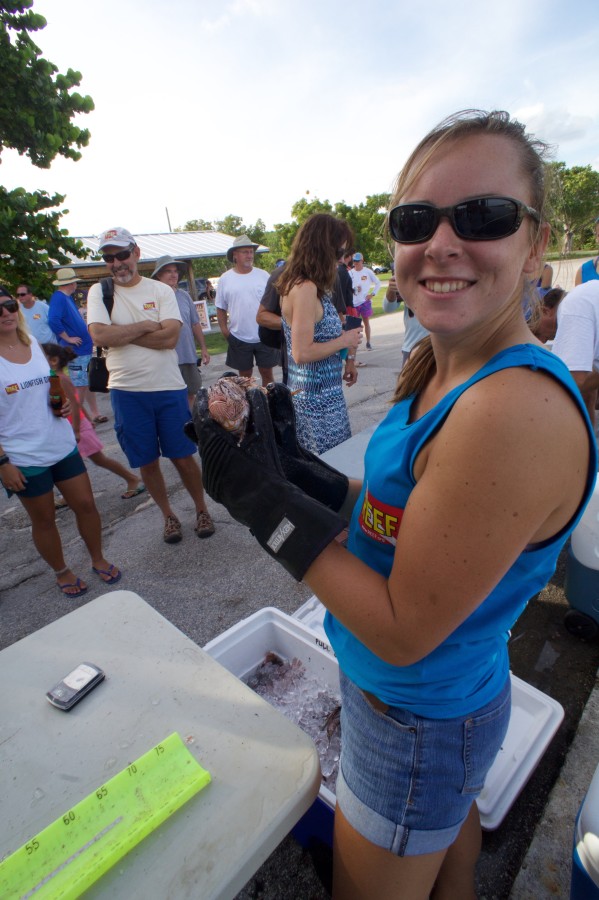
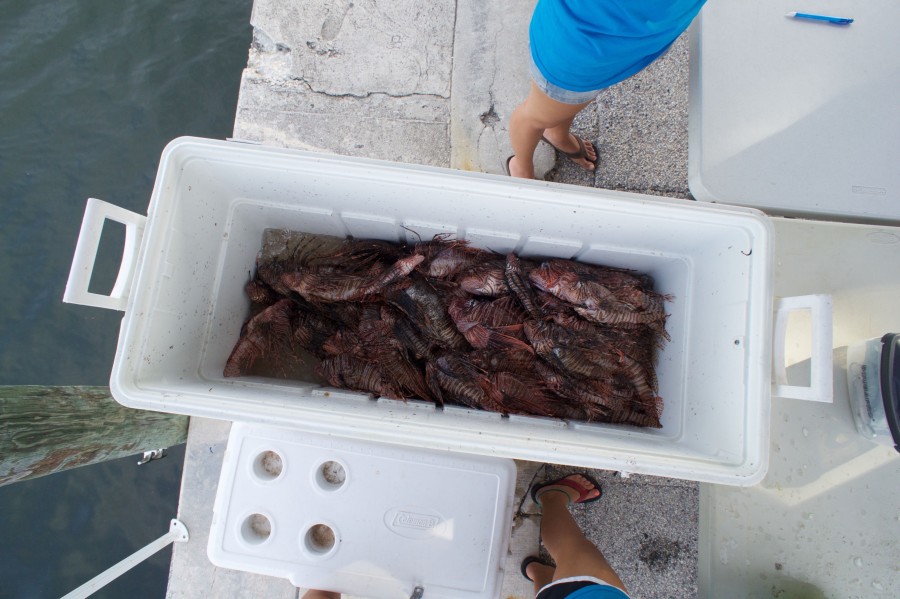

After a hectic Saturday working the REEF Key Largo Lionfish Derby, I used Sunday as a day to sleep in, do chores, rest, and be a general bum. It was nice to have a day to chill out, as the next two weeks were going to get busier and busier leading up to REEF Fest.
Monday morning was back to the Headquarters for a day of office work. To start the day, the interns and I had a meeting with Martha, the director of operations at REEF, who gave us a list of tasks to be completed for the day and for the week. The main focus of the day was putting away all the items from the Lionfish Derby. Many people aren’t aware of the time a small, non-profit organization like REEF puts into organizing events like the Lionfish Derbies and REEF Fest. A small crew of 10 or so people work together to make these large events run smoothly, but it requires a lot of extra work and effort that largely goes unnoticed by the public. So we spent Monday putting away all the things used for the Derby. Merchandise was put back in the store, tables and tents were stored, and all the little pieces were put back into their place. Then there was the fun task of burying the fileted bodies of several dozen lionfish. REEF keeps the majority of lionfish from the Derby and Lad had fileted 40-50 of them for personal consumption, but their bodies needed a proper burial. This required building a shallow grave in the backyard of REEF HQ (there is a very thin soil layer on top of limestone, which doesn’t make for the deepest of holes) but I cleared away the dirt and shoveled the stinky bodies in, then covered them with leaves, soil and detritus. To end the day at the office, Becca (an intern) walked me through the process of dissecting a lionfish for REEF’s records. After every Derby, about a dozen lionfish are dissected for REEF’s data base and a few are dissected for a separate researcher studying the invasive fish. It was a tedious, smelly, yet highly interesting process and I was most fascinated by examining the stomach contents. Lionfish are gluttonous predators and they stuff themselves full of fish, many of which are highly undigested and recognizable in the stomach sac of the lionfish. After a bit of guidance and a few pointers from Lad, we had thoroughly dissected my first lionfish!
Tuesday was spent finalizing the Derby clean up then working on a few tasks that normally occur around the HQ, such as filing orders from the shop to be mailed out, answering emails, and running errands. We also began to slowly think about the upcoming REEF Fest and all the work that needed to be done for the 3.5 day event. REEF Fest is an event held by REEF every few years and it serves several purposes for the organization. It’s an opportunity for REEF members to congregate from all over the states in Key Largo by attending a variety of seminars on fish IDs, ecology, marine conservation, and photography. There are also scheduled dives with a host of local dive shops in the morning and fun social events in the evening for everyone to mix and mingle. It’s a weekend jam packed with great events, but requires an extreme amount of planning, organizing, and set-up by the REEF HQ. We used Tuesday to start thinking about what we’d need for the following weekend, finding it is much easier to plan well in advance, allowing time for unexpected issues to arise and be solved. While the interns busied themselves with several digital tasks, I used the afternoon to work on my dissection skills and managed to work through 4 or 5 more lionfish. When you dissect the fish, you take a variety of measurements to gather general data about each specimen to get an idea of the local fish populations. You take body lengths, mouth gape, fat weight, make a sex ID and weigh the sexual organs (if possible), then you weigh and analyze stomach contents to finish. It definitely gets easier the more you practice, and I found myself completing a fish dissection in about 20 minutes or so (compared to the original hour and fifteen minutes it took the day before).
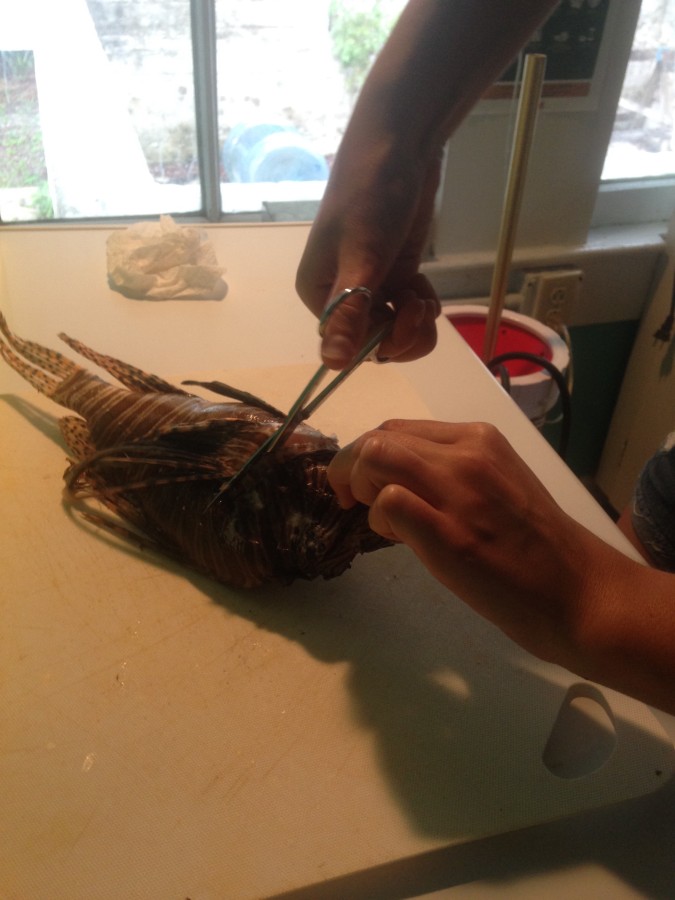
Wednesday morning the interns had a meeting at Marine Lab, another marine conservation group in Key Largo, so I found myself alone for the morning. I decided to use that time to finish the rest of the dissections, as there were about 6 or 7 left in the cooler, stinking up the back of the Headquarters. I got to work measuring, cutting, and weighing the remaining fish. By lunch, I had completed the rest of the dissections and cleaned up the tools and workspace, which thoroughly stank of dead, warm fish. The interns had arrived around 10 and were working on emails and online tasks while I worked with the fish. We had a fast lunch then started working on tasks for REEF Fest. One of these tasks was to organize the side room, which served as the mailing center, supply storage area, and intern room. I love organizing so happily jumped at the chance to tidy things and make more efficient use of the space. Around 4, Becca was going to leave to drop the outgoing orders and mail at the post office, so I tagged along to see what that was like (it was just like sending personal mail, but the post office workers recognize you!) After getting everything in the mail, we made a quick trip to the grocery store to buy more food, dropped it off at our respective houses, then headed back to the HQ to meet up with Ellie. Ellie had scheduled a short radio interview with a local talk show to advertise for the upcoming REEF Fest. Ellie has had years of experience advertising for REEF events (she first worked with REEF as an intern than was offered a full-time position with the organization). I just wanted to tag along to hear the interview and see another aspect to coordinating such a large event. The three of us drove down to Islamorada, where the interview was taking place and met the 4 large, jovial men running the talk show. They called us up when the segment was to begin and Ellie was given the chance to advertise for the upcoming event, which is free for all to attend. The host asked her a few questions about the event, about REEF, and about lionfish. It was a short segment, just over 5 minutes or so, but it was a great chance to reach out to the local community and spark their interest in attending REEF Fest and learning more about REEF. I was quite surprised by how genuinely interested the host was in REEF Fest and REEF. It is encouraging to see all sorts of locals want to raise public awareness for marine conservation organizations, especially in an area such as the Keys, where so much of the lifestyle is dependent on the marine environment. After the interview finished, they dropped me back off at my apartment and I even managed to squeeze in a quick run before a massive storm swept in. One of the things I definitely have enjoyed about being in South Florida in September is the big thunder and lightening storms that hit almost everyday. It reminds me of the storms we had growing up in Houston, and there is nothing better than snuggling up in bed, listening to the wind, rain and thunder as lightening flashes overhead.
Thursday was pre-designated as official yard work day. The REEF HQ has a nice amount of green space around it, which needed some TLC to prepare it for the upcoming REEF Fest. There was a lot to be done and luckily for us interns, Martha’s husband Ben volunteered his tools and time to help us get everything done. We spent the morning hacking low hanging branches off trees to clear up the parking lot, mowing the grass, cleaning steps/pavement, moving yard waste to the small grove of trees north of the property, cutting down tall weeds in the back as well as several trees which had died. The backyard area was also thoroughly organized and tidied up, and a whole assortment of random items were arranged into neater piles, giving the area a much more clean appearance. We also planted a some decorative bushes around the front and back entrances of the HQ, adding a much more cheery demeanor to the building. Lastly, Katie (an intern) went around with a leafblower, pushing all the leaf debris off the yard and into the far north area of the property. We had worked long and hard all morning, getting sweaty, grimy, and often covered in plants and dirt. But the progress we made was undeniable – the outside of the HQ looked amazingly neat and pruned, given the much needed face-lift. REEF treated the interns and me to lunch for our hard work in addition to getting off early for the day – we had finished all the yard work by 2:30 and we were far too dirty and sweaty to stay in the office longer. I did not expect to be spending my time with REEF doing things such as yard work, but there was still something to be learned from a day like today. As I mentioned before, many people are completely unaware of the work that a small non-profit puts into organizing a large event. Many corporations would hire a team to do the yard work, but due to the limited budget, REEF staff and interns are often doing a variety of tasks themselves. The great thing is that if you work or volunteer for an organization such as REEF, you gain a wide set of skills that you never expected to have, which will come in handy for years down the line. It isn’t glamorous, running a non-profit, but it’s done out of a passion for your cause and it definitely isn’t for the faint of heart.

Friday was a normal office day, answering emails, filling orders, and working on small tasks for REEF Fest. It was a bit slow in the morning, but Martha gave Katie and me permission to go on a dive in the afternoon! Part of the benefits of interning for REEF is you get one day a week to go out on a dive boat and do fish counts to add to the worldwide database REEF runs. It’s pretty nice– the interns get at least one day of diving a week for free at local dive shops and REEF gets more data to add to the ongoing base. Around 11, Katie and I grabbed our things, made a quick errand run at Office Depot to order some signs for REEF Fest, then quickly grabbed our dive gear and swimsuits and headed over to Rainbow Reef (a local dive shop). We checked in with the front desk and headed down to load our gear on our boat. I was stoked to be going out on the water and doing some surveys myself. I am not nearly as familiar with Caribbean fish as I am with Pacific fish, but I’ve been learning over the past few months and it was time to see what I knew! We headed out to French reef for our two afternoon dives. They were quite easy and shallow, at about 25 feet with minimal current. I am still amazed by how vastly different Caribbean and Pacific reefs are – the coral and fish species are similar to some extent, but are also so greatly different. It was really fun to spend the dives trying to identify all the fish around me. There were definitely some species that were largely abundant on every dive and I felt I knew about 35 or 40 species. The more I observed the reef, however, the more random species I’d spot and not be able to identify. I could often tell what family they belonged to (wrasse, angelfish, butterflyfish, parrotfish, etc) but I was stumped to identify the exact species. Oh well, just another chance to hit the identification books and keep learning! We had an incredibly enjoyable two dives and were back at the shop around 4:30. It was nice to get out of the office and in the water, to break away from the normal routine as well as to see the fish surveys REEF conducts.
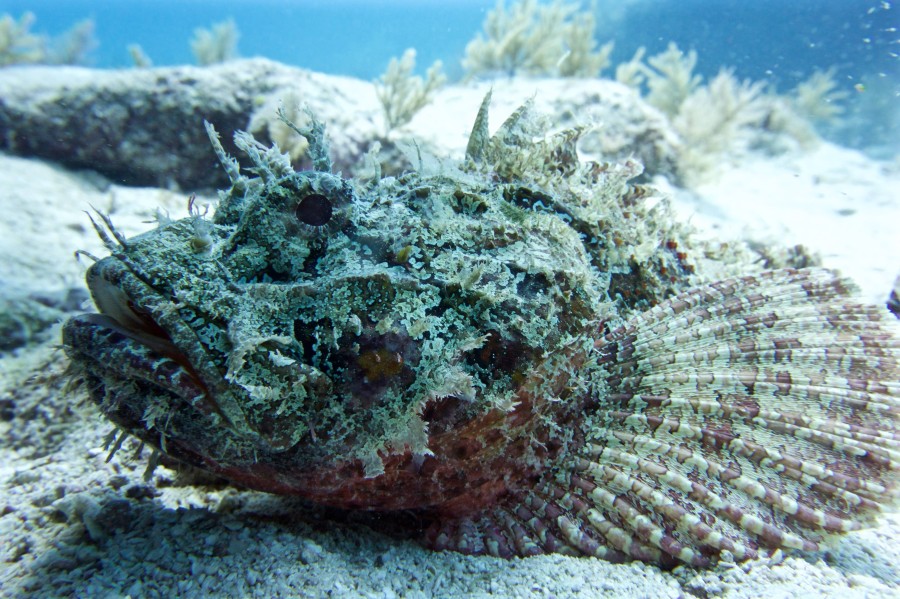

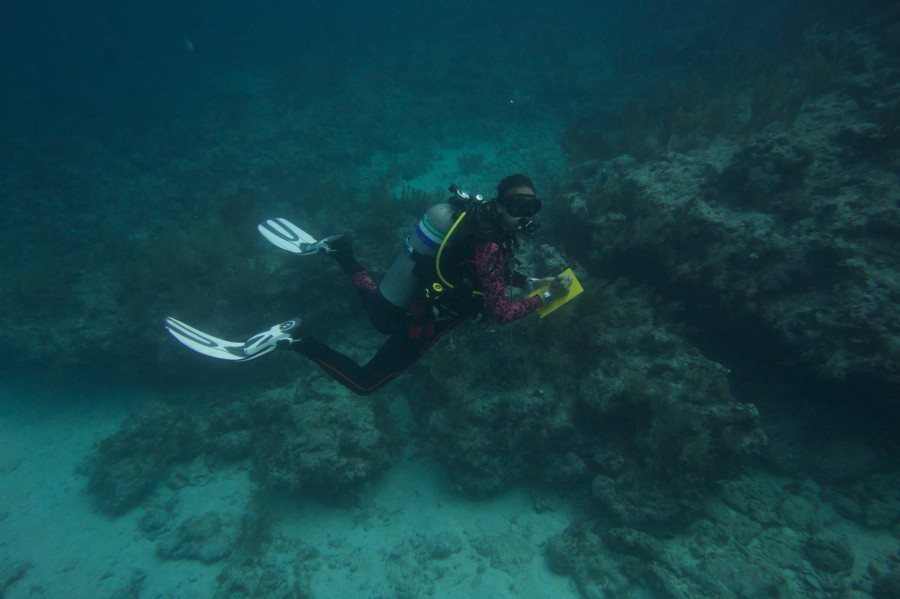
Saturday was International Coastal Clean Up Day, hosted by the Oceanic Preservation Society, and the interns and I had volunteered to spend the morning cleaning up the mangroves with Marine Lab. As I mentioned before, Marine Lab is another marine conservation group in Key Largo and they organized a clean up open to locals on Saturday, providing boats and trash bags to get rubbish off the reefs. Instead of doing the typical clean up at a beach, they wanted to go to some mangrove stands, which act as a filter between land and sea, capturing a lot more trash than meets they eye. Mangroves are also crucial nursery habitat for a variety of juvenile marine species, so it’s important to keep them free of human rubbish and functioning as healthy ecosystems.
We drove out in a parade of 5 or 6 boats, tying alongside to the mangroves, and climbing on the roots to get to the interior of the mangroves, were trash is pushed up in the mud on high tides and stuck between the twisted mangrove roots. We spent almost two hours picking our way around the mangrove roots, grabbing every bit of trash we could find amongst the roots. It was simultaneously amazing and horrifying to see the variety of trash caught in the roots – from lines and nets to plastic bottles/containers to old toys, shoes, styrofoam, glass bottles, and more. After the two hours, the group of 7 on our boat had managed to get well over 150 lbs of trash.

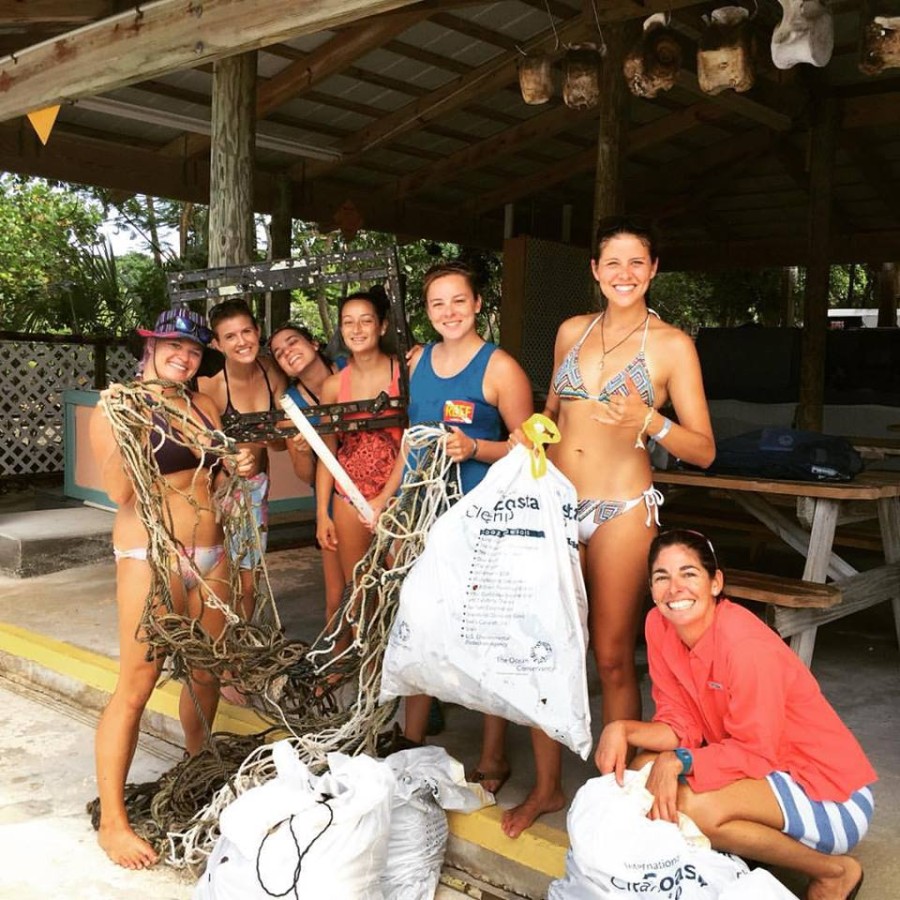
In addition to the trash gathered by the other volunteers, I’d say easily almost 800-900 pounds of trash was removed from the mangroves by 40 sets of hands. After we got back to the Marine Lab, we offloaded all the trash from the boats, cleaned up, and then headed out for our next adventure. Olivia, Katie, and I were scheduled for two afternoon dives with Rainbow Reef, so we had to quickly pick up our gear and head over to the dive shop for the 12:15 check-in time. We checked in, loaded up on our dive boat, and headed out to the reef. We were diving on Molasses Reef for the day and our first site had nice, low current and plenty of marine life. We were busy the whole dive identifying fish and marking it on our survey sheets, occasionally snapping a few photos here and there. It turned out to be quite the dive, seeing several stingrays, a massive loggerhead turtle, some eels, a couple Caribbean reef sharks, a nurse shark, plus a plethora of vibrant reef fish. Our second dive was a relaxing drift dive along the edge of the shallow reef, with more stingrays and fish to record on our surveys. To top it all off, we had stunning weather and I couldn’t have asked for a better day. After we finished our dives and made it back to shore, we took quick showers then drove to a local Mexican restaurant to satiate our hunger.
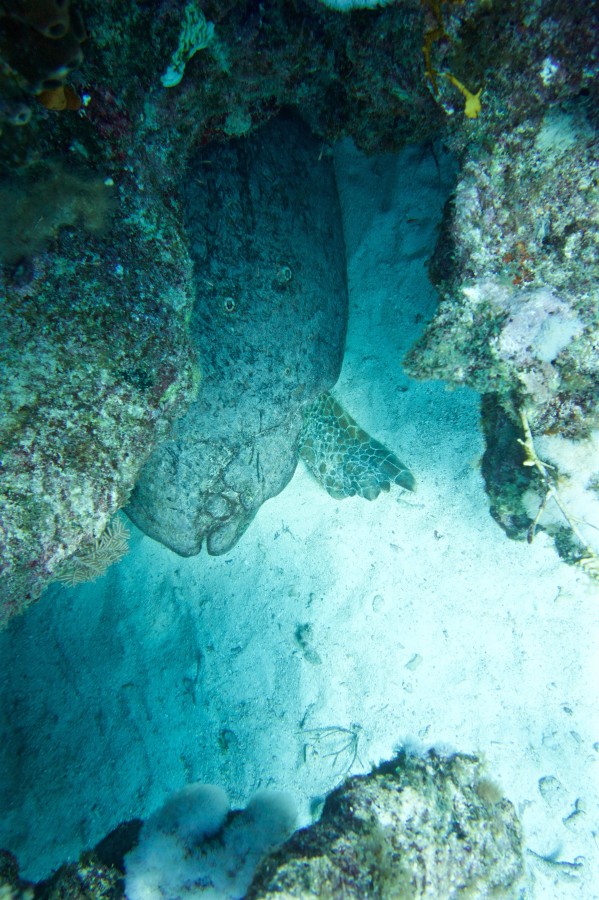
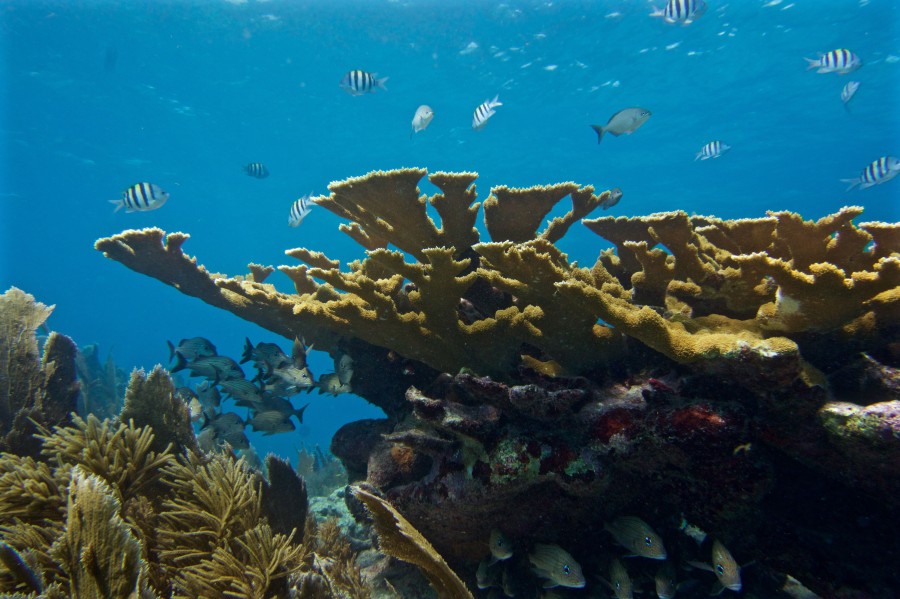
My first full week with REEF proved to be a diverse week, giving me a really good look at work at a nonprofit organization. I definitely wasn’t aware beforehand of just how much dedication and hard work the team at REEF puts in to make the organization successful, and I was inspired by the passion everyone at REEF has for the underwater world.
